Ever looked at a flatbread and thought, “This could use a protein boost”? You’re not alone. With more people looking for meals that are both satisfying and macro-friendly, high-protein bread alternatives are making serious waves. And let’s be real, Cottage Cheese Flatbread is one of the easiest (and tastiest) ways to step up your game.
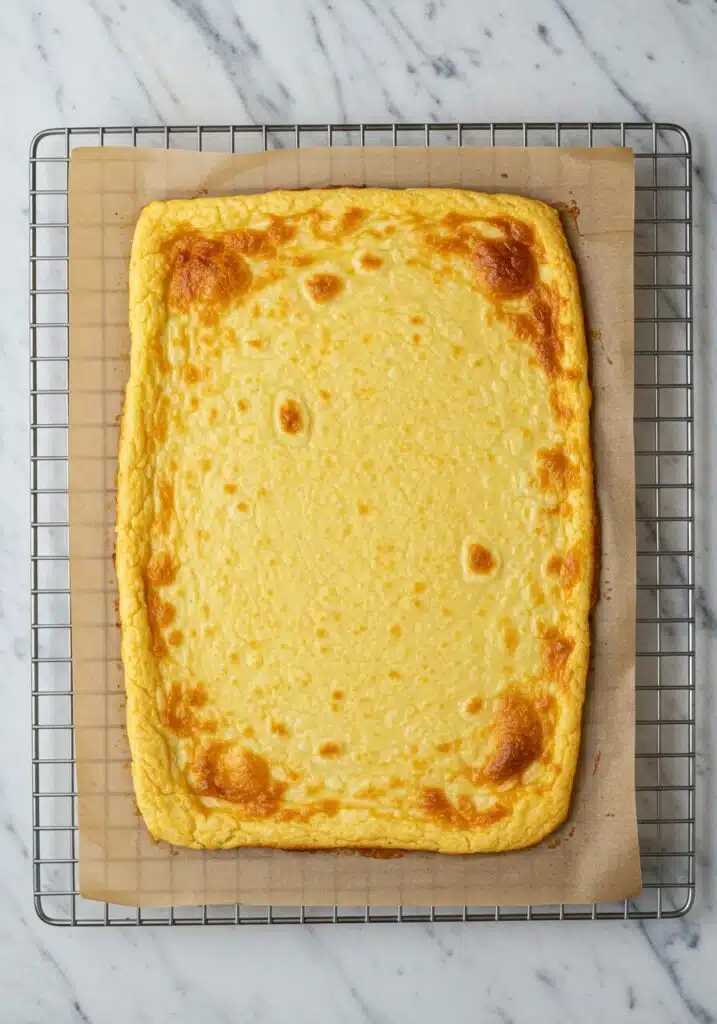
This recipe was inspired by popular methods that prioritize high-protein, low-effort cooking. It’s the kind of flatbread that feels indulgent but actually supports your fitness goals. Packed with protein, low in carbs, and ridiculously versatile, cottage cheese transforms into a bread substitute that works as a wrap, a pizza crust, or a quick snack.
Why does this matter? Because we all know how frustrating it is when healthy eating feels bland or overly complicated. A lot of people in the fitness community say that having a reliable flatbread option makes it way easier to stick to their plan. It’s simple, customizable, and can actually replace store-bought wraps that are usually loaded with additives.
In this guide, you’ll learn everything from what cottage cheese flatbread is, why it’s so nutrient-dense, and how to make it step by step. Plus, we’ll break down 7 variations you can rotate through so you never get bored. Whether you’re meal prepping for the week, whipping up a quick lunch, or craving a high-protein pizza crust, this flatbread has your back, If you liked this, you’ll love our full guide with over 45 high-protein cottage cheese recipes!
What Is Cottage Cheese Flatbread?
At its core, Cottage Cheese Flatbread is a high-protein, low-carb alternative to traditional bread. Instead of relying on yeast or heavy flour, it uses cottage cheese as the star ingredient. When baked, the curds create a soft but sturdy texture that’s flexible enough for wraps yet strong enough to hold toppings like pizza or dips. Many fitness-focused home cooks say this trick makes a difference because it keeps meals filling without weighing you down.
This recipe was inspired by the rise of protein-rich swaps in everyday cooking. People who are already fans of High-Protein Cottage Cheese Dinner Bowls or Cottage Cheese Banana Muffins often add flatbread to their weekly rotation. It’s versatile enough to work for lunch, dinner, or even as a snack.
From a nutrition perspective, cottage cheese delivers complete protein, making it a smart choice for muscle recovery and satiety. According to the National Institutes of Health, high-quality proteins like casein (found in cottage cheese) digest slowly, helping you stay fuller for longer. That’s one reason why this flatbread is popular in both weight-loss and muscle-building meal plans.
Let’s be real, bread will always have its place, but this flatbread gives you an option that feels lighter, more purposeful, and better aligned with a health-conscious lifestyle.
Why Cottage Cheese Flatbread Is High in Protein and Low in Carbs
One of the biggest reasons people are switching to Cottage Cheese Flatbread is the impressive nutrition profile. Unlike traditional bread that’s often loaded with refined carbs, this version delivers a strong hit of protein with fewer carbohydrates. On average, a serving packs around 10–12 grams of protein, making it a much better option for anyone focused on fitness, weight loss, or simply eating more balanced meals.
Many community trends point out that high-protein bread alternatives like this make meal prep easier. Instead of reaching for store-bought wraps, you can enjoy a flatbread that’s naturally low in carbs, gluten-free friendly, and way more filling. It’s also a clever way to sneak in extra casein protein, which digests slowly and supports muscle recovery. According to Harvard Health, diets with adequate protein can help preserve lean mass while keeping hunger in check.
We all know how frustrating it is when “healthy bread” feels bland or cardboard-like. That’s why this protein flatbread is a win, it actually tastes good while supporting your goals. For example, it pairs perfectly with dips like High-Protein Buffalo Chicken Dip or as a side to a Cottage Cheese Taco Bowl.
At the end of the day, swapping regular bread for this cottage cheese version can help cut unnecessary carbs while boosting protein intake, no gimmicks, just simple science-backed cooking.
How to Make Cottage Cheese Flatbread (Step-by-Step Guide)
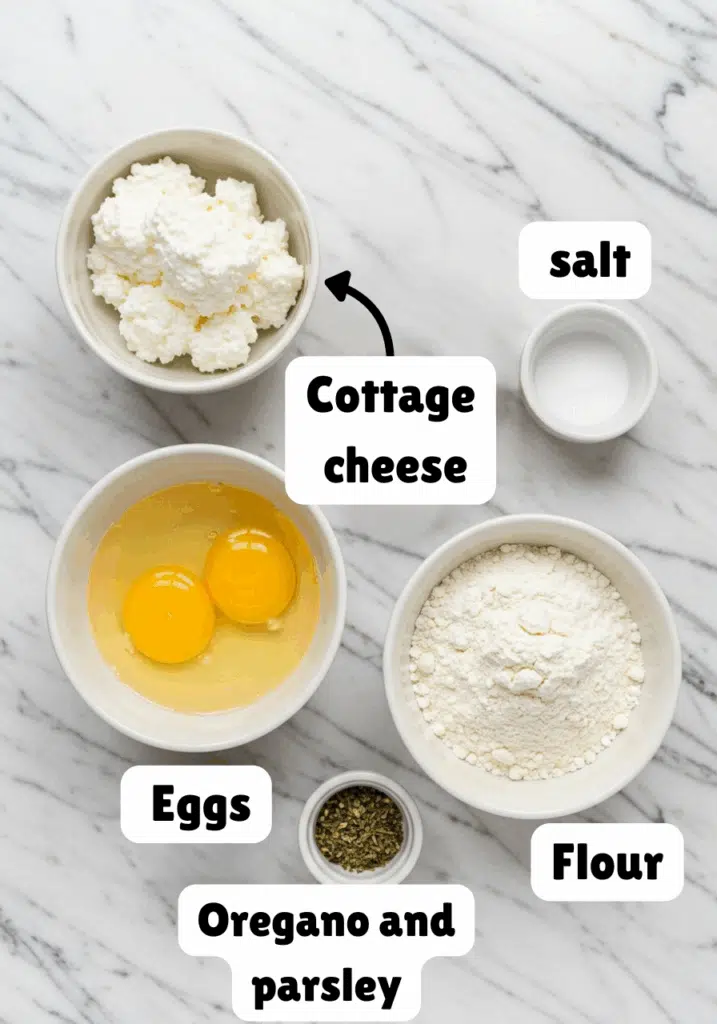
Making Cottage Cheese Flatbread at home is surprisingly simple, and that’s exactly why it’s become such a trend in the high-protein cooking world. Instead of complicated doughs that require yeast or hours of rising time, this version comes together quickly with just a few staple ingredients. The key is blending cottage cheese until smooth, combining it with eggs and flour (or a gluten-free substitute), and baking until golden.
How to Make Cottage Cheese Flatbread (Step-by-Step Guide)
Ingredients You’ll Need
- 1 cup cottage cheese in a small bowl
- 2 large eggs in a bowl
- ½ cup all-purpose flour in a bowl
- ½ teaspoon salt in a tiny bowl
- 1 teaspoon dried herbs (like oregano and parsley) in a small dish
- Cooking spray for baking sheet
- Extra oregano for topping (optional)
Step-by-Step Instructions
Step 1: Prepare Your Equipment
Set up all your ingredients in separate bowls as listed above. Preheat your oven to 350°F (176°C). Line a baking sheet with parchment paper and lightly coat with cooking spray.
Step 2: Blend All Ingredients
Add all of your ingredients (cottage cheese, eggs, flour, salt, and dried herbs) into either a food processor or blender. Process or blend them until completely smooth with no lumps remaining.
Step 3: Prepare the Baking Sheet
Take out your prepared baking sheet with parchment paper and lightly coat it with cooking spray to prevent sticking.
Step 4: Pour and Shape
Pour your smooth mixture onto your baking sheet. Evenly spread it out and shape it however you want using a spatula or the back of a spoon. You can make it round, rectangular, or any shape you prefer.
Step 5: Add Toppings
Top it with a little extra oregano or anything else you desire for added flavor and visual appeal.
Step 6: Bake the Flatbread
Put it into the oven at 350°F/176°C for around 30-35 minutes if making it thinner, or up to 50 minutes if making it thicker. Thicker flatbreads need more time to cook through completely.
Step 7: Check for Doneness
Remove it from the oven once it starts to brown around the edges and the center appears set. The flatbread should be golden brown and spring back lightly when touched.
Step 8: Cool Completely
Let it cool completely on the baking sheet before cutting or serving. This cooling time helps the texture set properly and prevents crumbling.
Pro Tips for Best Texture
For Perfect Golden Brown Edges:
- Use proper oven temperature – 350°F/176°C is ideal for even browning without burning
- Spread evenly – consistent thickness ensures uniform cooking and browning
- Don’t open the oven too early – let it bake undisturbed for the first 25 minutes
- Use parchment paper – prevents sticking and allows for easy removal
For a Tender, Set Center:
- Blend until completely smooth – this creates an even texture throughout
- Use full-fat cottage cheese – the fat content keeps the flatbread tender and moist
- Don’t underbake – the center should be completely set and not jiggly when done
- Cool completely – this allows the structure to firm up properly
Additional Pro Tips:
- Use room temperature ingredients – they blend more easily and create a smoother mixture
- Adjust thickness for preference – thinner for crispy texture, thicker for more bread-like consistency
- Test for doneness – edges should be golden brown and center should spring back when lightly touched
- Season to taste – cottage cheese can be mild, so don’t hesitate to add extra herbs or seasonings
- Shape as desired – you can make it round, rectangular, or even cut into fun shapes after cooling
Baking Time Guidelines:
- Thin flatbread (¼ inch): 30-35 minutes
- Medium flatbread (½ inch): 40-45 minutes
- Thick flatbread (¾ inch): 45-50 minutes
- Extra thick: Up to 55-60 minutes
Storage and Reheating:
- Store leftover flatbread covered in the refrigerator for up to 4 days
- Reheat in the oven at 300°F for 5-10 minutes to restore crispness
- Can be frozen for up to 2 months – wrap tightly in plastic wrap or foil
- Thaw completely at room temperature before reheating
- For individual servings, reheat in a toaster oven for 2-3 minutes
This recipe makes 1 large flatbread that serves 8-10 people. Serve warm as a side dish, use as a base for pizza toppings, cut into strips for dipping, or enjoy with your favorite spreads and toppings!
7 Delicious Variations of Cottage Cheese Flatbread
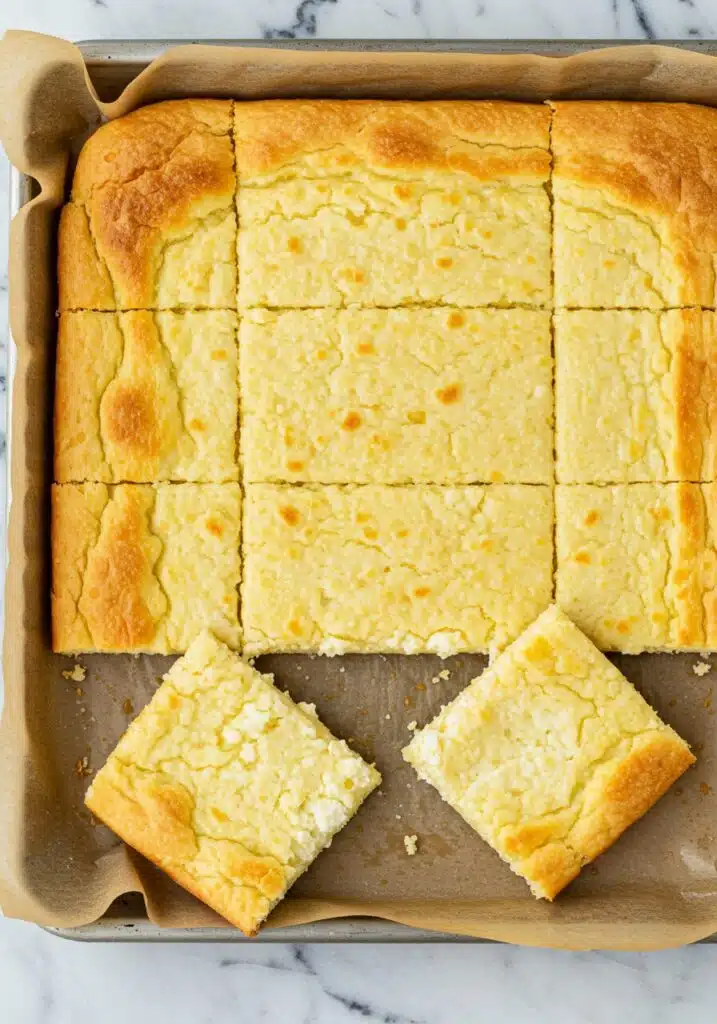
The best thing about Cottage Cheese Flatbread is how versatile it can be. Once you master the base recipe, you can easily switch up the flavors to match your mood or meal plan. Many people in the healthy eating community say that variety is what keeps high-protein cooking exciting, and honestly, they’re right. Here are seven ways to remix your flatbread so it never feels repetitive.
1. Classic Herb Flatbread
Add a mix of dried oregano, basil, and parsley to your batter. This version works great for Mediterranean-inspired wraps or alongside Greek Cottage Cheese Bowls.
2. Garlic Parmesan Flatbread
A fan favorite. Mix in garlic powder and a sprinkle of parmesan cheese for a savory, cheesy twist. Perfect for pairing with soups or dipping into marinara.
3. Spicy Jalapeño Flatbread
For those who like heat, stir in chopped jalapeños or red chili flakes. It’s a protein-packed option that works well for lunch wraps or alongside High-Protein Buffalo Chicken Dip.
4. Mediterranean Olive Flatbread
Add sliced black olives and a pinch of rosemary. This version gives major “mezze platter vibes” and can be served with hummus or grilled chicken.
5. Spinach & Feta Flatbread
Blend in cooked spinach and crumble in some feta. It’s a nutrient-rich variation inspired by flavors similar to spanakopita but with way fewer carbs.
6. Sweet Cinnamon Flatbread
Who says flatbread has to be savory? Mix in cinnamon and a touch of vanilla extract. Top with peanut butter or Sweet Cottage Cheese Bowl for a high-protein breakfast.
7. High-Protein Pizza Crust
Bake the flatbread slightly thinner, then top it with sauce, mozzarella, and your favorite protein (think grilled chicken or turkey pepperoni). This is one of the easiest ways to enjoy pizza night without the carb overload.
Community wisdom shows that rotating through these versions keeps meal prep fun. According to Cleveland Clinic, experimenting with herbs and spices not only enhances flavor but also adds antioxidants and phytonutrients that support overall health.
At the end of the day, whether you’re in the mood for something savory, spicy, or even sweet, these variations make Cottage Cheese Flatbread a customizable, macro-friendly staple.
Cottage Cheese Flatbread vs. Other High-Protein Breads
With so many protein-packed bread alternatives out there, it’s fair to ask: how does Cottage Cheese Flatbread stack up? Let’s be real, no single option is “the best” for everyone. It depends on your health goals, taste preferences, and how much time you want to spend in the kitchen. Here’s a side-by-side breakdown of the most common high-protein bread options and how they compare.
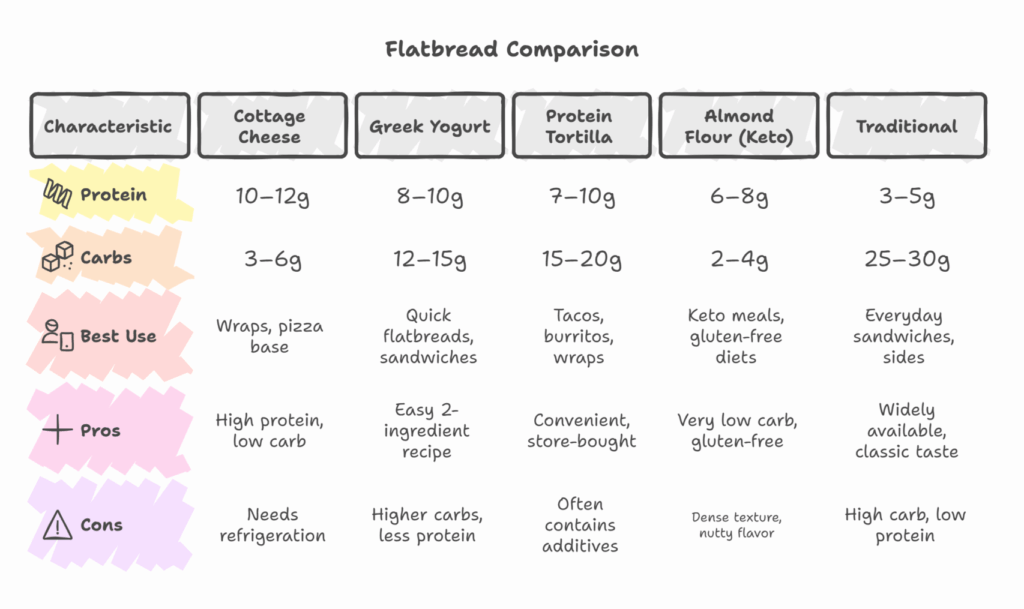
As you can see, Cottage Cheese Flatbread offers a sweet spot between nutrition and flexibility. It’s higher in protein than most homemade flatbreads and significantly lower in carbs compared to traditional options. Many people in the fitness and wellness space choose it because it works well for both weight-loss meal prep and muscle-building diets.
For readers curious about boosting their protein intake beyond flatbreads, recipes like High-Protein Cottage Cheese Pasta Sauce or Air Fryer Protein Cookie Dough show just how adaptable cottage cheese can be. And according to the American Heart Association, choosing nutrient-dense swaps like this can improve heart health without sacrificing satisfaction.
How to Store and Meal Prep Cottage Cheese Flatbread
One of the best parts about Cottage Cheese Flatbread is how meal-prep friendly it is. Since it’s made with simple ingredients like cottage cheese, eggs, and flour, it stores well and can be reheated without losing its soft, flexible texture. That makes it a perfect choice for busy people who want quick, high-protein options ready to go.
For fridge storage, keep the flatbreads in an airtight container or resealable bag for up to 4 days. Placing parchment paper between each piece helps prevent sticking. When you’re ready to eat, you can reheat them in a skillet, air fryer, or even directly in the microwave. Many fitness-focused meal preppers say the skillet method gives the best texture because it brings back a little crispness.
If you want to extend the shelf life, freezing is the way to go. Let the flatbreads cool completely, then stack them with parchment paper and freeze in a freezer-safe bag. They can last up to 2 months this way. To reheat, just pop them into the oven or toaster oven until warmed through. No joke, it’s that easy.
Meal prepping with this flatbread opens a ton of possibilities. You can pair it with Cottage Cheese Taco Bowls for a high-protein lunch, use it as a pizza base for quick dinners, or keep it on hand for healthy wraps during the week. According to Healthline, prepping balanced foods ahead of time not only saves hours in the kitchen but also makes it easier to stick to nutrition goals.
At the end of the day, storing and prepping this flatbread is low effort but high payoff, exactly the kind of kitchen hack that helps keep healthy eating sustainable.
Serving Ideas: What to Eat with Cottage Cheese Flatbread
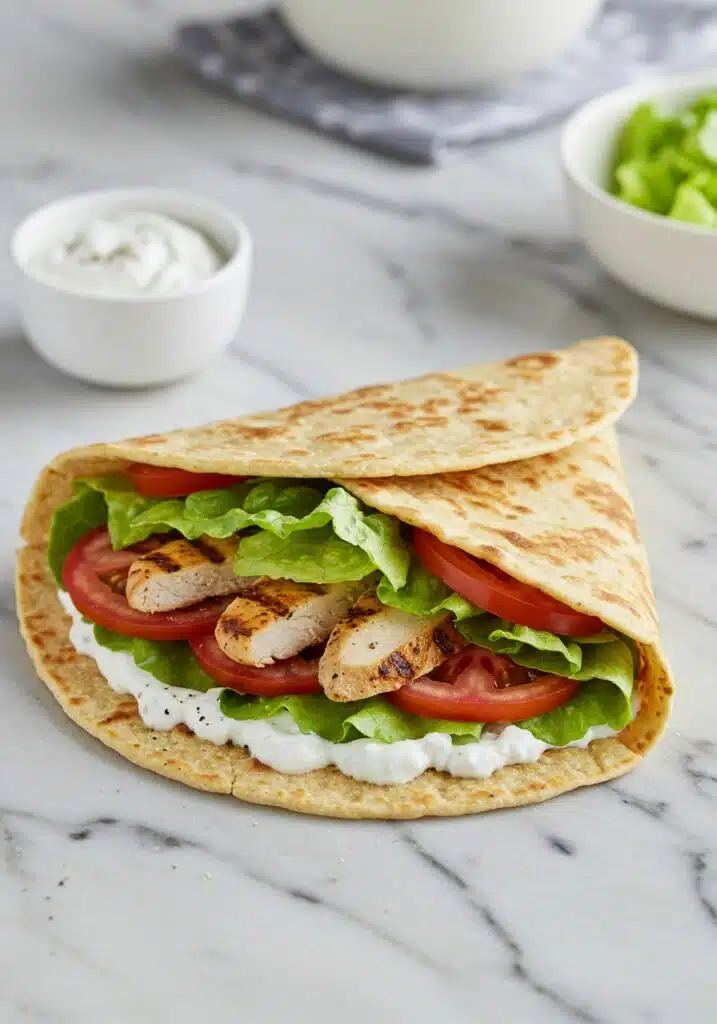
Once you’ve made your Cottage Cheese Flatbread, the fun part is figuring out all the ways to enjoy it. It’s versatile enough to work for breakfast, lunch, dinner, or even snacks. Here are some practical ideas to get the most out of your high-protein flatbread:
Breakfast
- Spread with Greek yogurt, fresh berries, and a drizzle of honey for a protein-packed start to your day.
- Top with scrambled eggs and spinach for a savory breakfast wrap that pairs well with Protein Pancakes with Cottage Cheese.
Lunch
- Use as a base for wraps filled with lean proteins like grilled chicken, turkey, or High-Protein Buffalo Chicken Dip.
- Make an open-faced flatbread sandwich with hummus, roasted veggies, and a sprinkle of feta.
Dinner
- Transform your flatbread into a pizza crust with tomato sauce, mozzarella, and your favorite protein toppings.
- Serve alongside Cottage Cheese Taco Bowls for an easy high-protein meal.
Snacks
- Cut into strips and lightly toast for dippable flatbread with guacamole, salsa, or low-fat cheese.
- Spread almond or peanut butter and sprinkle with cinnamon for a quick sweet snack.
Many fitness and nutrition experts suggest keeping flexible, high-protein options like this flatbread on hand. According to EatRight, having ready-to-eat, nutrient-dense foods can help maintain balanced meals throughout the day without relying on processed options.
Whether it’s a breakfast hack, a lunch wrap, or a pizza base, Cottage Cheese Flatbread makes it easy to enjoy a variety of meals while staying on track with protein goals.
FAQs about Cottage Cheese Flatbread
Can you make flat bread with cottage cheese?
Yes! Cottage cheese makes an excellent base for flatbread. When blended with eggs and flour, it creates a protein-rich, tender flatbread that’s lower in carbs than traditional bread.
Why does my cottage cheese flatbread fall apart?
This usually happens when the flatbread isn’t baked long enough or cooled properly. Make sure it’s golden brown and set in the center, then let it cool completely before cutting to allow the structure to firm up.
Will cottage cheese melt when baked?
Cottage cheese doesn’t melt like regular cheese. Instead, it sets and binds with the eggs and flour to create a cohesive, bread-like texture when baked at 350°F.
Is cottage cheese good for a flat stomach?
Cottage cheese is high in protein and relatively low in calories, which can help with satiety and muscle maintenance. While no single food guarantees a flat stomach, cottage cheese can be part of a healthy, balanced diet
Finally: Why Cottage Cheese Flatbread Deserves a Spot in Your Kitchen
At the end of the day, Cottage Cheese Flatbread isn’t just another trendy recipe, it’s a versatile, high-protein, low-carb solution that fits seamlessly into any meal plan. Whether you’re looking to boost protein intake, reduce carbs, or simply enjoy a quick and satisfying snack, this flatbread ticks all the boxes. Many nutrition-conscious home cooks agree that having a reliable, nutrient-dense bread alternative makes healthy eating both achievable and enjoyable.
The beauty of this recipe lies in its adaptability. You can stick to the classic version, experiment with savory herbs, or even create sweet variation, all while keeping protein levels high. Meal prepping a batch in advance saves time during the week and ensures you always have a nutritious option ready to go. For storage tips, remember to keep flatbreads in an airtight container in the fridge for up to 4 days or freeze them with parchment paper for up to 2 months.
From wraps and pizza bases to breakfast hacks and snack ideas, the possibilities are endless. Recipes like Sweet Cottage Cheese Bowl or High-Protein Cottage Cheese Pasta Sauce show just how versatile cottage cheese can be in a high-protein diet.
So, give it a try and make it your own. Have tips to improve this version? We’d love to hear from you! Remember, swapping traditional bread for Cottage Cheese Flatbread is a small change that delivers big benefits, keeping your meals flavorful, protein-packed, and perfectly suited for a health-conscious lifestyle.
Print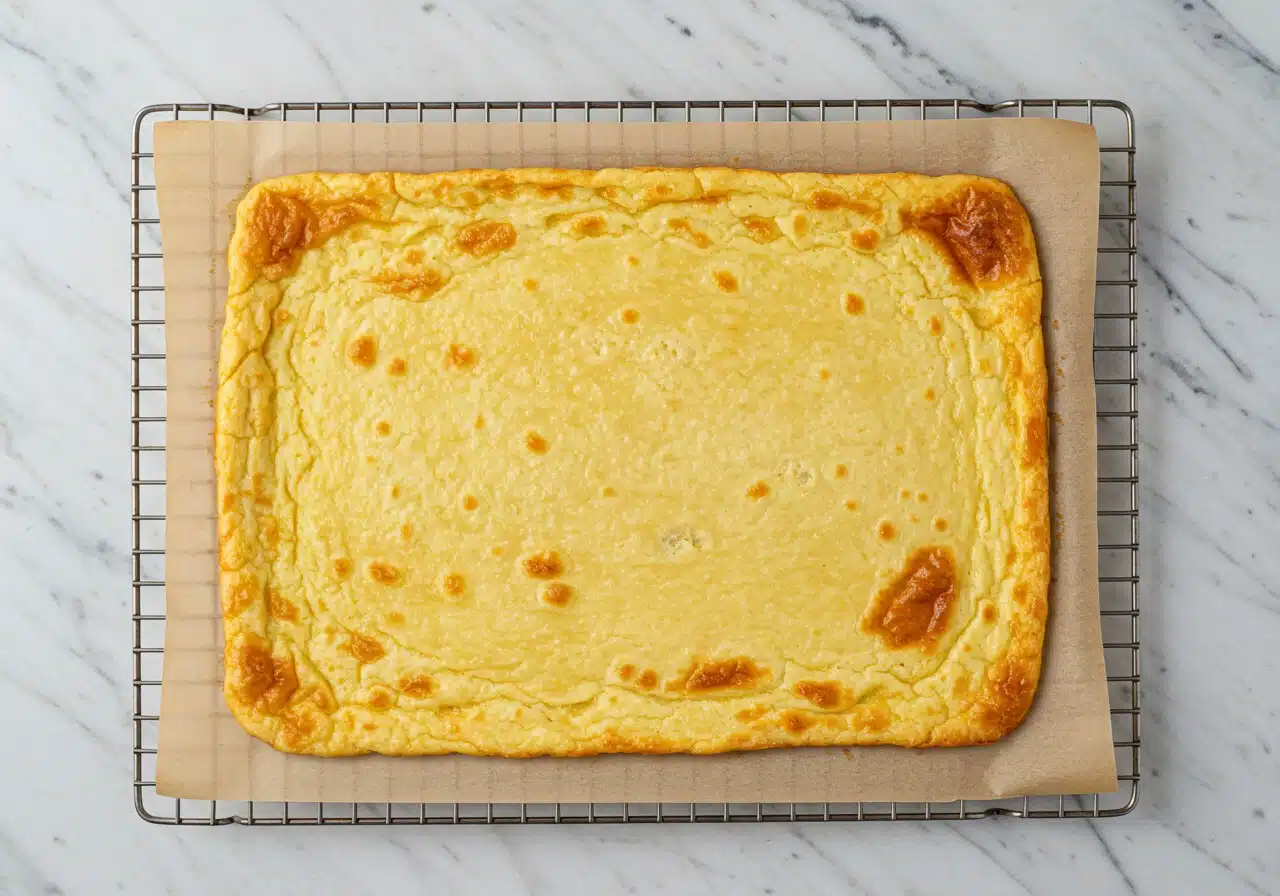
Cottage Cheese Flatbread recipe
- Total Time: 35 minutes
- Yield: 1 large flatbread (8–10 servings) 1x
Description
This protein-packed Cottage Cheese Flatbread is a healthy, low-carb alternative to traditional bread made entirely in the oven. With just 5 simple ingredients blended smooth and baked to golden perfection, this flatbread has crispy edges and a tender center. Perfect for meal prep or as a versatile base for toppings!
Ingredients
- 1 cup cottage cheese
- 2 large eggs
- ½ cup all-purpose flour
- ½ teaspoon salt
- 1 teaspoon dried herbs (oregano and parsley)
- Cooking spray for baking sheet
- Extra oregano for topping (optional)
Instructions
- Add all ingredients (cottage cheese, eggs, flour, salt, and herbs) into either a food processor or blender.
- Process or blend until completely smooth with no lumps remaining.
- Preheat your oven to 350°F (176°C).
- Take out a baking sheet and line it with parchment paper, then lightly coat with cooking spray.
- Pour your smooth mixture onto the prepared baking sheet.
- Evenly spread it out and shape it however you want using a spatula or spoon.
- Top with a little extra oregano or any other desired seasonings.
- Put it into the oven for 30-35 minutes for thinner flatbread, or up to 50 minutes for thicker versions.
- Remove from oven once it starts to brown and appears set in the center.
- Let it cool completely on the baking sheet before cutting or serving.
Notes
- Use full-fat cottage cheese for best texture and flavor.
- Blend until completely smooth for even texture throughout.
- Thickness determines baking time – thicker flatbread needs 45-50 minutes, thinner needs 30-35 minutes.
- Flatbread is done when edges are golden brown and center is set.
- Let cool completely before cutting to prevent crumbling.
- Store covered in refrigerator for up to 4 days.
- Can be reheated in oven at 300°F for 5-10 minutes to crisp up.
- Freezes well for up to 2 months – thaw completely before reheating.
- Prep Time: 5 minutes
- Cook Time: 30 minutes
- Category: Bread, Side Dish
- Method: Baked, Oven
- Cuisine: American, Healthy
Nutrition
- Serving Size: 1 slice (1/8 of flatbread)
- Calories: 62
- Sugar: 1g
- Sodium: 140mg
- Fat: 2g
- Saturated Fat: 1g
- Unsaturated Fat: 1g
- Trans Fat: 0g
- Carbohydrates: 6g
- Fiber: 0g
- Protein: 6g
- Cholesterol: 47mg


